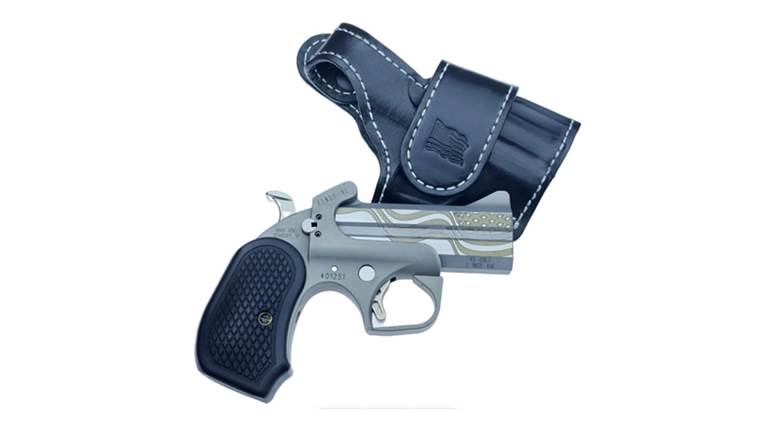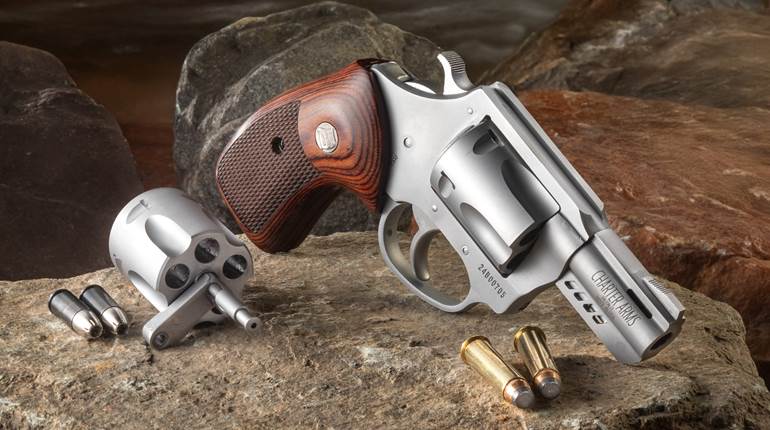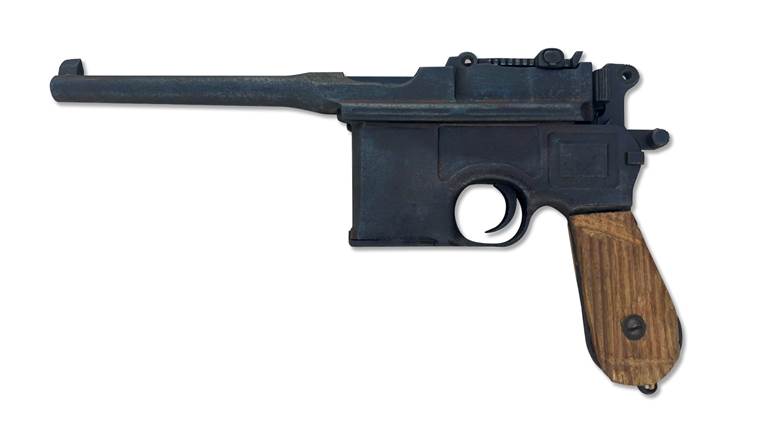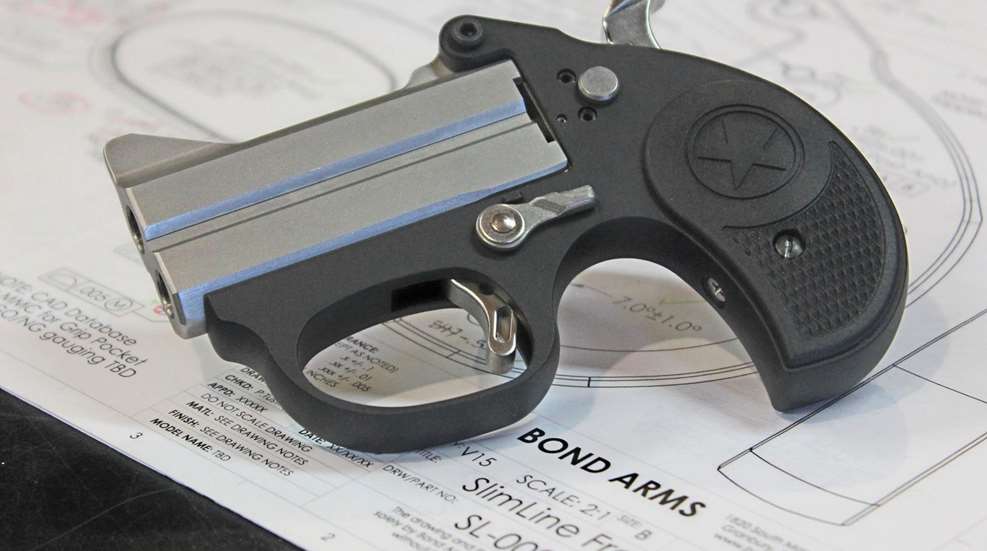
When Bond Arms was founded in 1995 by Greg Bond, a longtime tool and die maker, the double-barrel derringers had for the most part devolved into pistols of ill repute. 'Saturday Night Special'-grade clones of the single-action, over-under Remington Model 95 derringer were being cranked out at bargain basement prices by less reputable companies. Because they were small, lightweight and inexpensive, these pot-metal plinkers seemed like a good choice for pocket carry. However, they were often poorly constructed out of low grade materials, they lacked modern day safety features and they garnered a reputation for being less than reliable.
Bond set out to reform this double-barrel pistol design and boost its performance potential. Bond Arms pistols are wholly American made and constructed from stainless steel. Instead of pinning the barrels to the frames, they are supported by a removable hinge pin that allows for the installation of a wide variety of interchangeable caliber-conversion barrels. The pistols have been beefed up to safely chamber potent cartridges including .45 Colt, .410 Bore shot shells, 10 mm Auto and .357 Mag., to name just a few.

Bond’s updates to the platform include the addition of three safeties; a rebounding hammer, a release-lever retention device to prevent the pistol from bumping open while firing and a cross bolt safety. The frames and flats of the barrels are carefully buffed and polished to remove manufacturing marks for an eye catching shine.
Bond Arms, now helmed by Greg’s brother, Gordon, took a successful step in broadening its customer base in 2019 with the release of the Rough Series. Based on the company's Texas Defender, these stout pocket-size models have suggested retail prices starting at $269, which is about half the price of the tricked-out high-polish models.
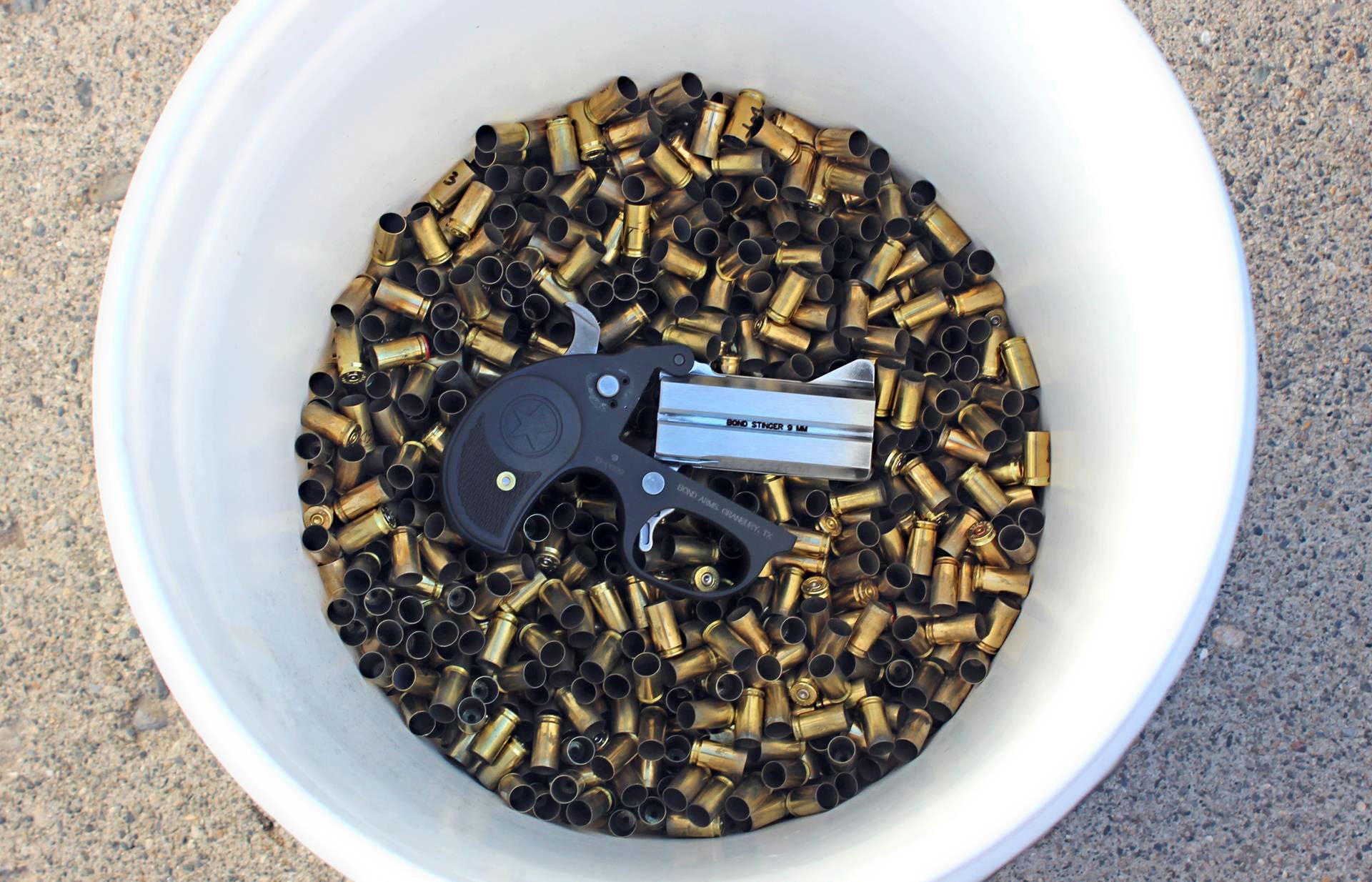 The Bond Arms Stinger in 9 mm Luger after undergoing a 2,500-round stress test.
The Bond Arms Stinger in 9 mm Luger after undergoing a 2,500-round stress test.
However, long time fans and new customers alike have been making the same request: Please offer a reduced weight double-barrel pistol with a slimmer profile for more comfortable carry. Gordon Bond heard this request years ago but opted for a more careful approach. Knowing that the 'junk-gun' reputation for mixed-metals derringers is still in circulation around the U.S. shooting community, he and his team have spent several years developing what has been dubbed the Stinger pistol, which will initially be available chambered in 9 mm and .380 ACP.
Last summer, I visited the shop of engineer Paul Tusting of ALIGN Product Development. He walked me through the five generations of the Stinger frame’s development process and showed me buckets of brass from the 2,500-round 9 mm frame stress tests. The Stingers have been subjected to +P and proof load testing as well. I was impressed by how much thought and R&D had gone into what some might see as a simple two-shot pocket pistol.
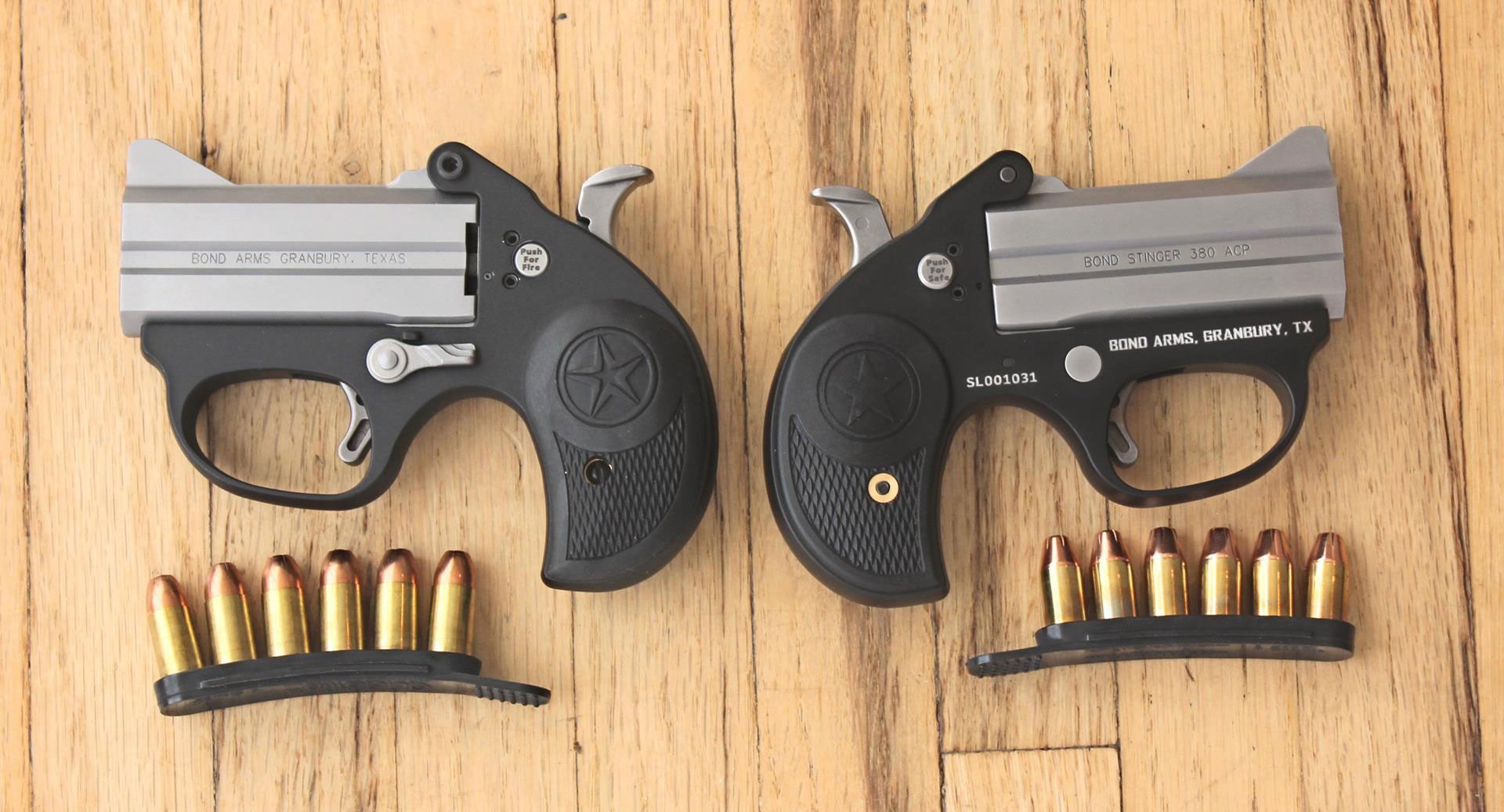 A comparison between the two versions of the Bond Arms Stinger, with the 9 mm Luger chambered version on the left and .380 ACP chambered version on the right.
A comparison between the two versions of the Bond Arms Stinger, with the 9 mm Luger chambered version on the left and .380 ACP chambered version on the right.
The Stinger will be utterly familiar to those who have handled other Bond pistols. Like its predecessors, the Stinger is an over/under pistol with a tip-up stainless steel barrel. The one-piece barrel has an integral front sight blade and hinge port. Secured to the frame via a removable hinge pin, the top of the hinge has been milled to form a rear sight notch.
Barrels chambered for semi-automatic pistol cartridges do not have a manual extractor. This is because the cases lack the rim found on revolver cartridges. Instead, there's a notch taken out of the left side of the dual chamber. This allows spent cartridge cases to be lifted out of the chambers using either a thumbnail or the rim of an empty cartridge. The bottom edge of the barrel is beveled so that it's free-floated, meaning, it does not come into contact with the frame.
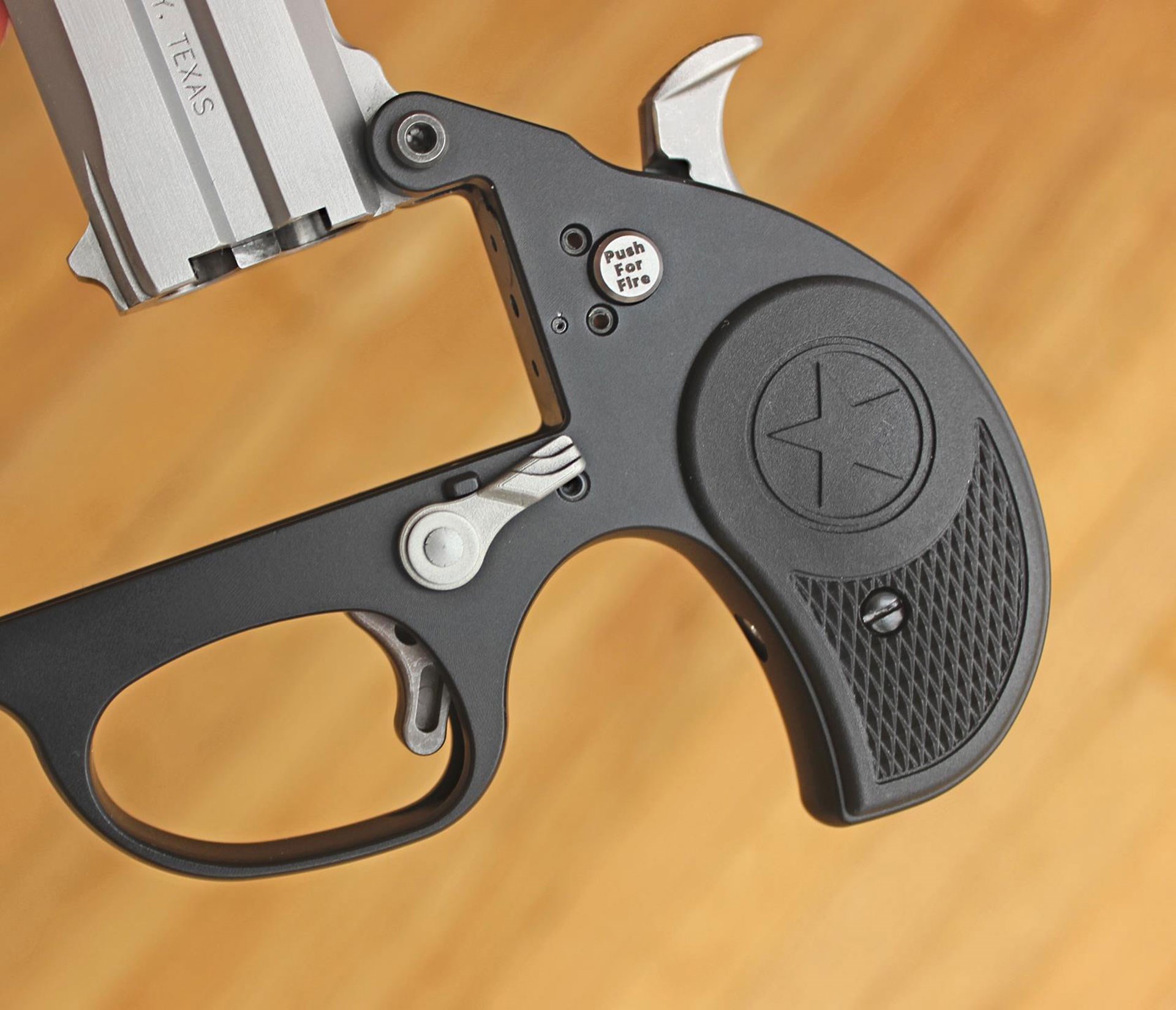 A closer look at the controls of a Bond Arms Stinger.
A closer look at the controls of a Bond Arms Stinger.
The Stinger is built around the company's fifth iteration of a slim aluminum frame. Just like top-notch AR-15 receivers, it’s precision milled from a billet of 7075 aluminum which is then treated with a matte black hard-coat anodized finish. The generously sized trigger guard is integral to the frame. Swinging open the barrel reveals a stainless steel firing pin block set into the aluminum frame. The release lever assembly, cross-bolt safety, hammer and trigger are also stainless steel. This means the pistol has a steel-on-steel lock-up for added durability.
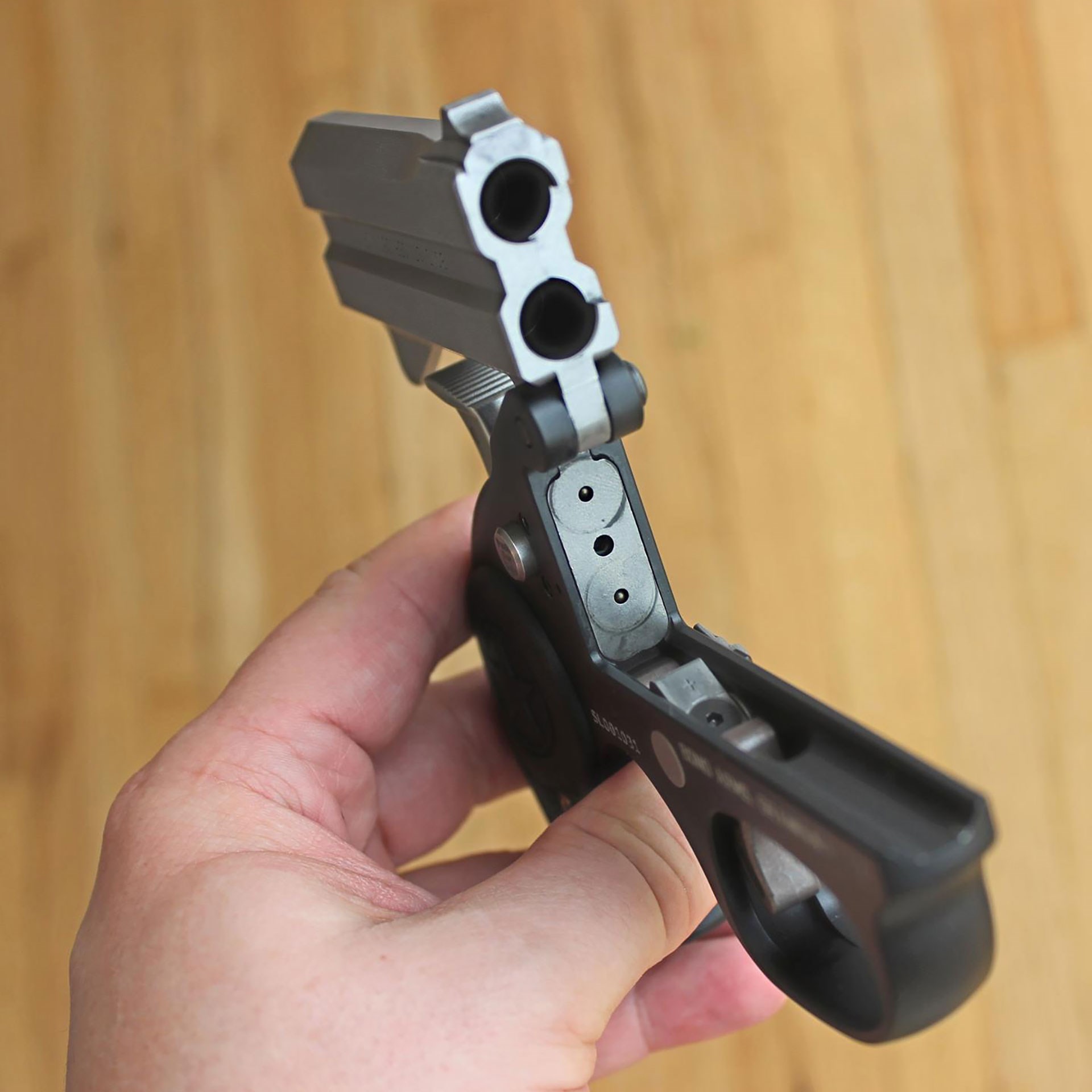 A view of the chamber of the two barrels and the firing-pin holes on the Bond Arms Stinger.
A view of the chamber of the two barrels and the firing-pin holes on the Bond Arms Stinger.
Like other Bond pistols, the Stinger is a traditional single-action, which means the exposed hammer must be manually cocked for each shot fired. The cross-bolt safety button is laser engraved with the words 'Push for Fire' on the left side of the frame and 'Push for Safe' on the right. The access port for this button's locking screw is located in between the firing pin ports. The screw can be tightened to lock the cross-bolt safety in either the Safe or Fire position.
It's helpful to remember that the small trigger does not press back towards the grip so much as roll downwards towards the trigger guard. If you try to press it straight back it feels much harder to pull than it actually is. When rolled properly, the 9 mm Stinger had a 5-lbs. 10-oz. trigger pull while the .380's trigger broke with 6-lbs. 1-oz. of pressure.
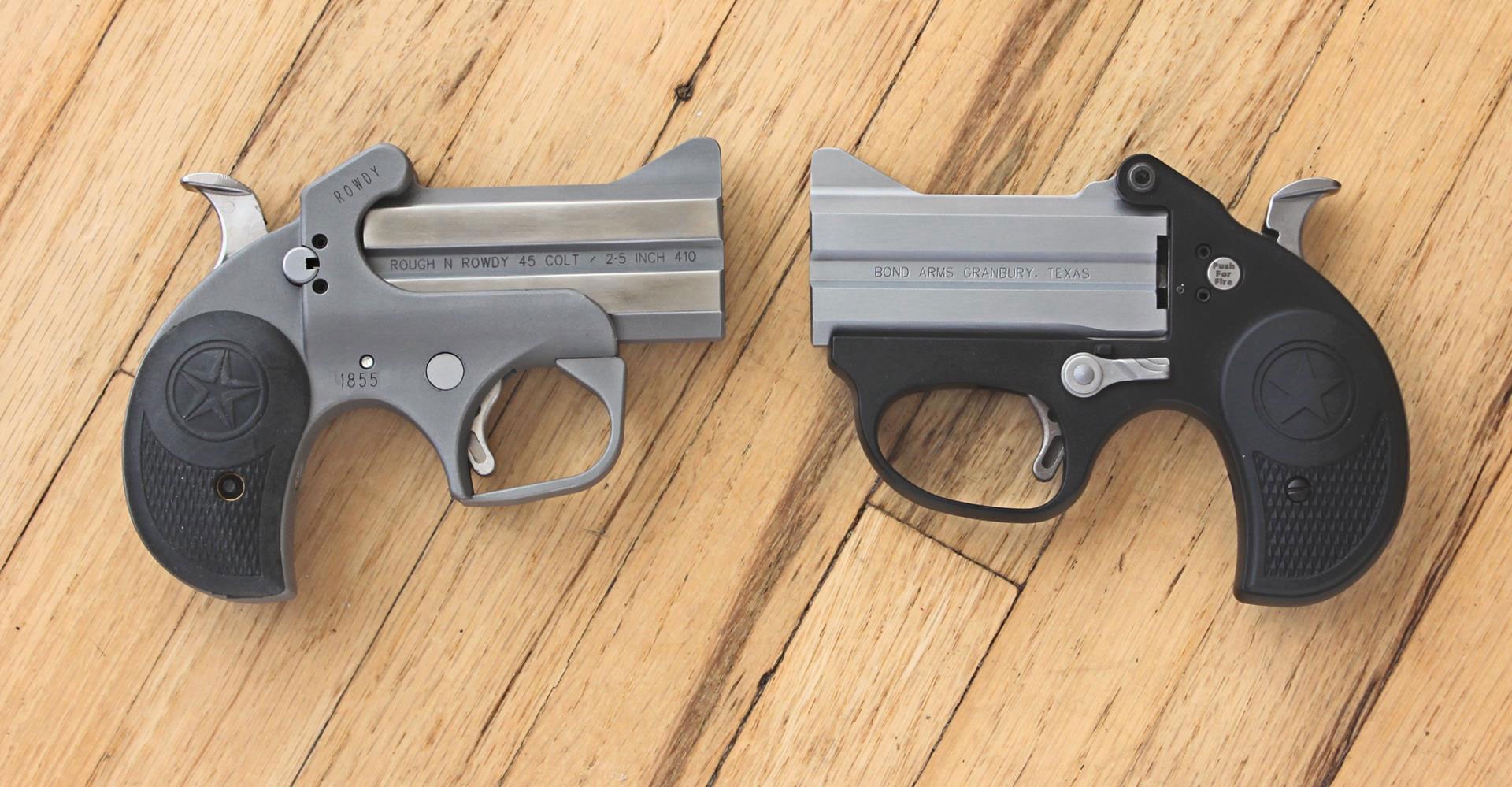 A size comparison between the Bond Arms Rowdy (left) and Stinger (right).
A size comparison between the Bond Arms Rowdy (left) and Stinger (right).
The easiest way to appreciate the dimensional trim down of the Stinger is a side-by-side comparison with an all-steel model, like the Rough Series Rowdy .45/.410 pistol shown here. The Rowdy ships with a 3" barrel for an overall length of 5". It's 3.8" tall with a removable trigger guard and rubber grips. It weighs in at 20.2-oz. unloaded. The barrel is 0.7" wide, the frame 0.96" at its widest point and the grip is 1.22" wide with the rubber panels installed.
The Stingers also have 3" barrels with the same overall height and length profile. However, they tipped the scales at just 11.5-oz. The barrel and frame are both 0.55" wide with the button safety and release lever protruding an additional 0.1". The Stingers will ship with two sets of grip panels. The textured black Zytel composite polymer panels provide the slimmest profile of just 0.90". Installing the rubber grip panels will thicken the grip to 1.15" but provide more purchase for managing felt recoil. Folks who wish to split the difference can use one of each for a 1" grip profile. I tested the pistols with a rubber panel on the palm side of the grip frame and a polymer panel set on the finger tip side. It was a workable compromise for both pistol calibers.
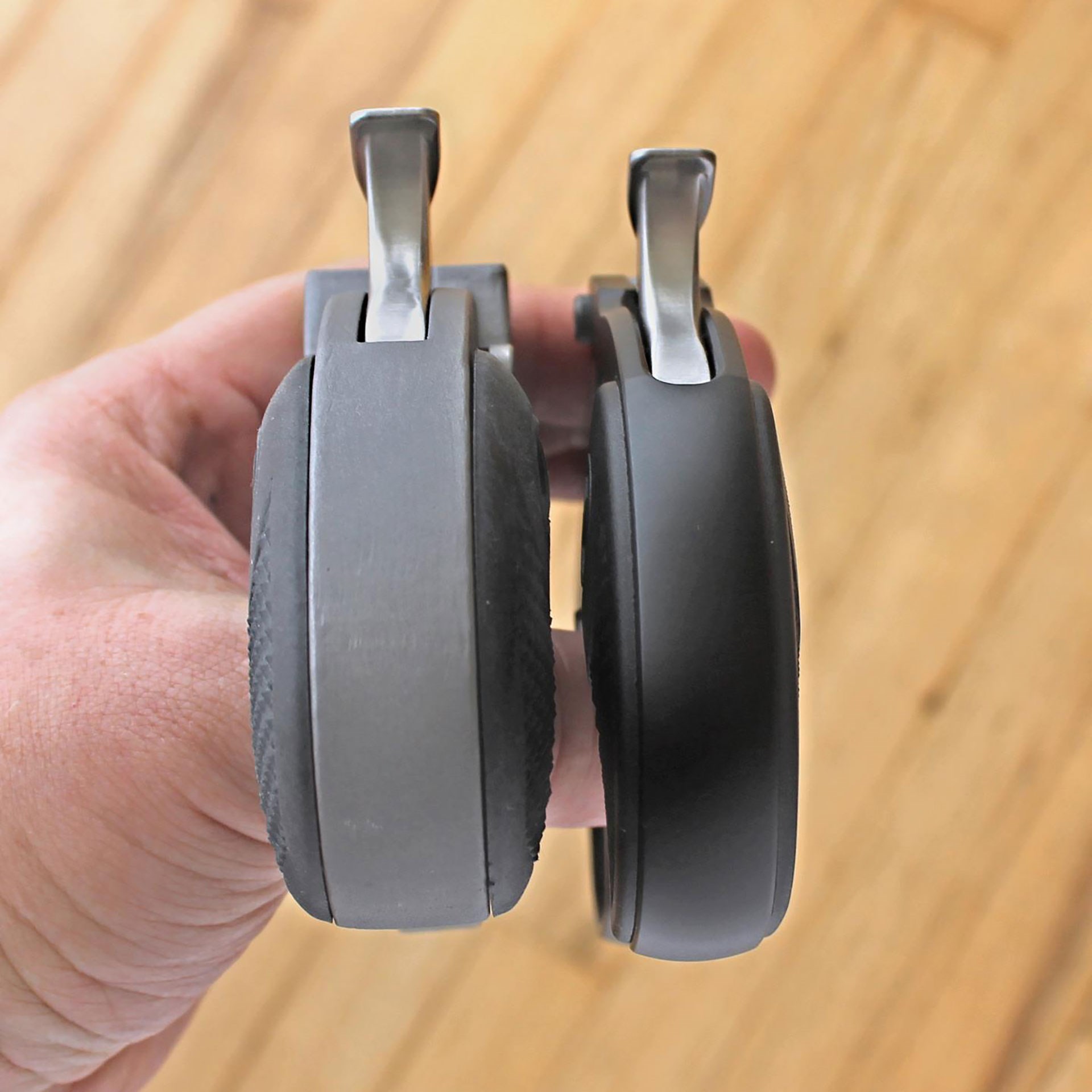 A width comparison between the Bond Arms Rowdy (left) and Stinger (right).
A width comparison between the Bond Arms Rowdy (left) and Stinger (right).
The overall fit and finish of the two Stingers I worked with were right up to Bond Arms’ standards, which is to say, top notch. All of the pistol’s controls and operations cycled smoothly and properly. There were no malfunctions of any kind in the course of test firing the guns. The .380 ACP and 9 mm versions both use the same frame, which is designed to handle hotter 9 mm ammunition. Pre-production test frames were subjected to 2,500-round ammunition testing using standard pressure 9 mm loads.
Assessing how much kick is too much can be tricky since the perception of felt recoil varies by individual. But be perfectly clear, the 9 mm Stinger pistol is not for the fainthearted or the inexperienced enthusiast. The series got its name from the snappy recoil the 9 mm version produces. The pistol was most controllable with a full set of rubber grips installed. Load selection will be important. Generally speaking, the slower, heavier bullet loads were noticeably easier to work with. The .380 ACP version of this pistol provides a more enjoyable shooting experience. It was noticeably less aggressive in the recoil department and can be reasonably comfortable to work with using the slim textured polymer grip panels.
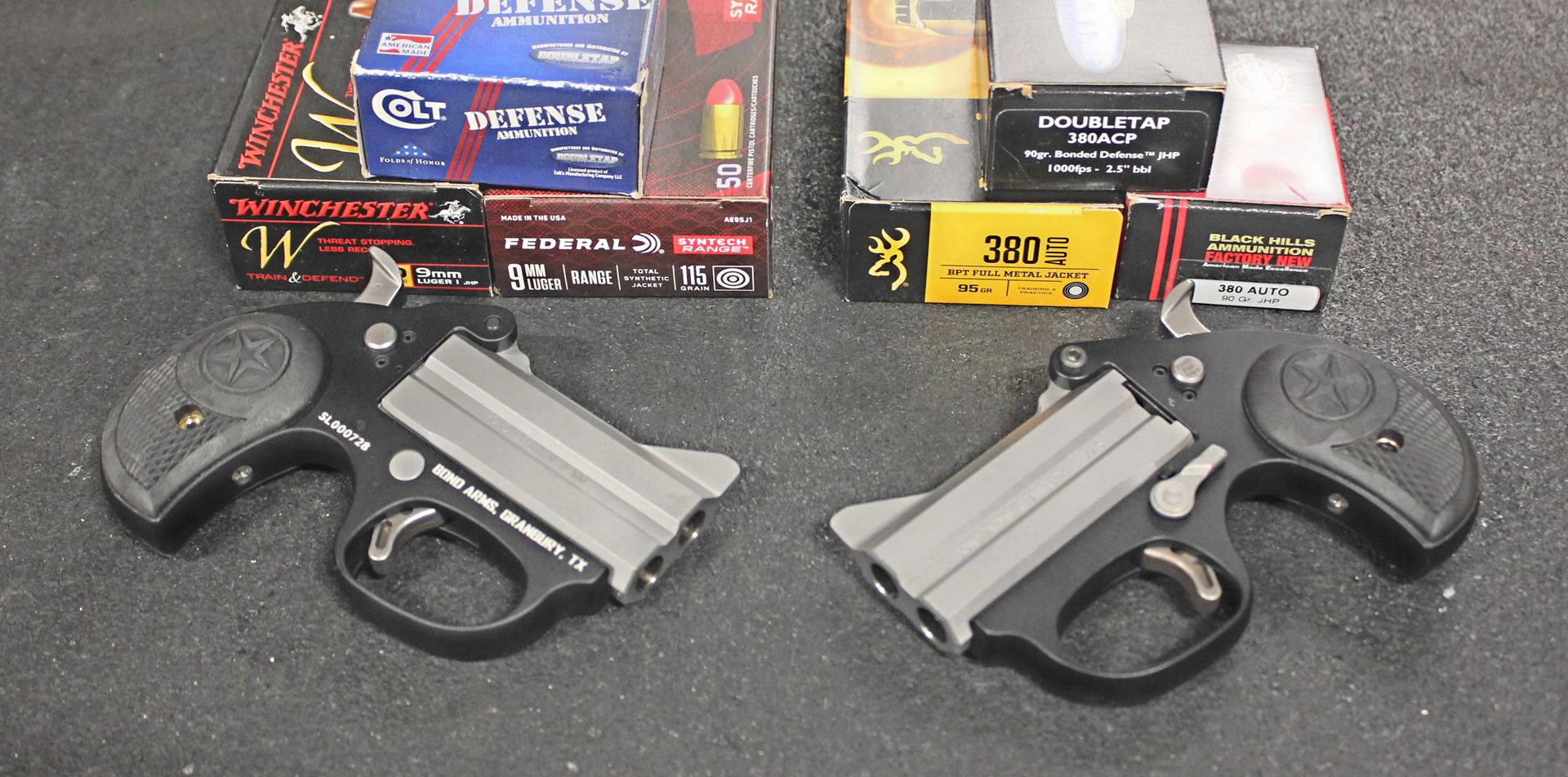 The 9 mm Luger and .380 ACP versions of the Bond Arms Stinger, with the ammunition section for each during testing.
The 9 mm Luger and .380 ACP versions of the Bond Arms Stinger, with the ammunition section for each during testing.
One feature of Bond pistols that I never get tired of seeing during range tests is the chronograph results. They can squeeze more velocity out the ammunition they fire than one might expect. Don’t get me wrong, derringers always have been and ever will be short-range defensive options. They just don't have the extended range, accuracy potential or ammunition capacity of larger handguns. But much like a bolt-action rifle, the sealed breach of the double barrels keeps all of the pressure produced by a fired cartridge headed towards the muzzle. As a result, these little pistols can often generate muzzle energy levels similar to competing models.
Bullet velocity was measured for 10-rounds fired alternately through the pistols' over (top) and under barrels. Limited accuracy testing consisted of 10-rounds fired at 7-yards, again alternating barrels. Upper and lower barrel groups were measured along with the size of the gap between them. Test ammunition included practice and defense grade loads from Black Hills, Browning, Double Tap, Federal Premium and Winchester. The results are shown in the following table:
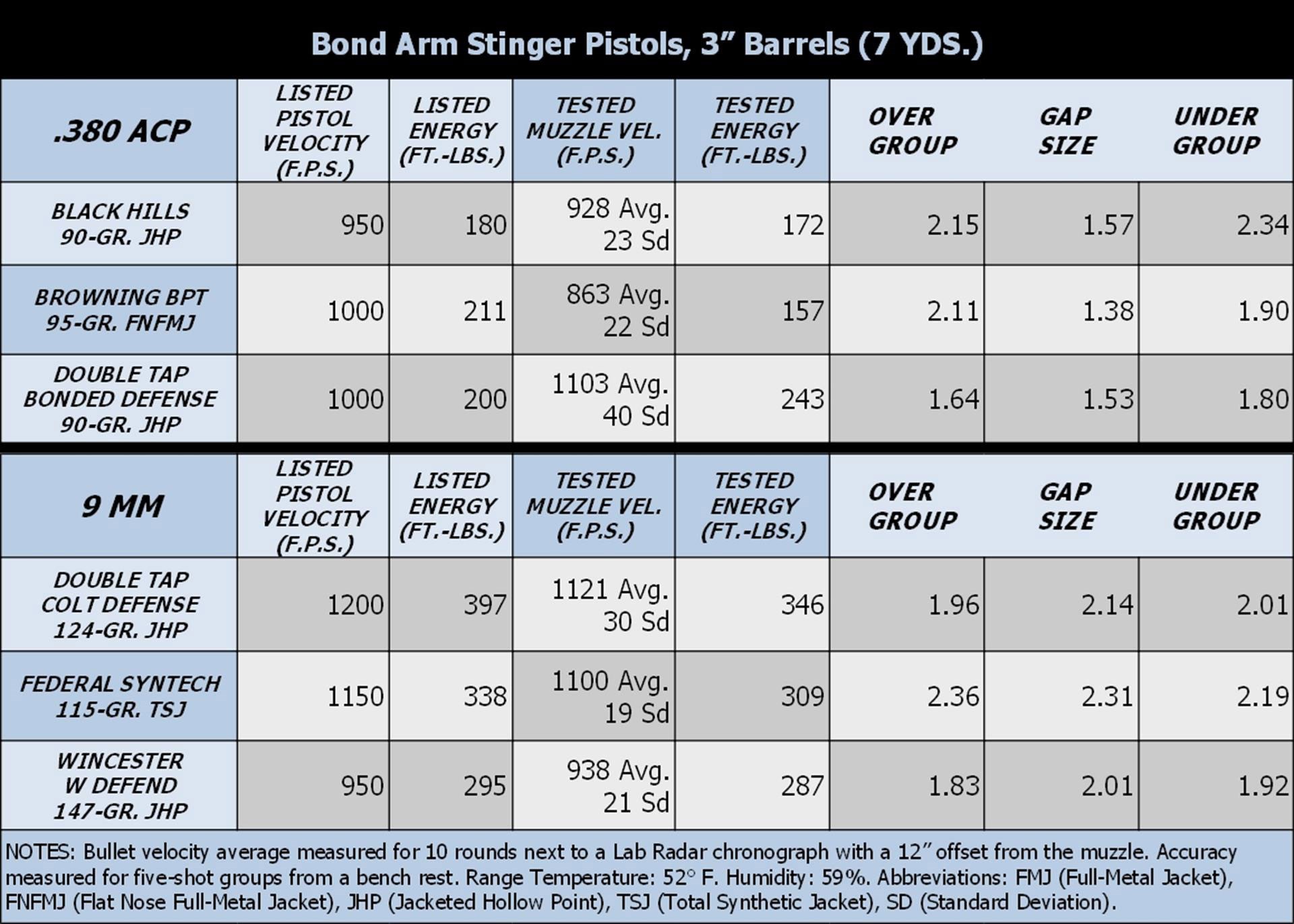
As with past Bond Arms product launches, the first run of Stingers will be relatively small. Production will ramp up based on demand. Initially, this model will only be available as complete pistols chambered in either 9 mm or .380 ACP. But it seems likely that caliber-conversion barrels will be available at some point in the future. The Stinger has a suggested retail price of $379, which is about $100 more than a Rough Series model but around $150 less than a similar high-polish model.
Not every gun manufacturer who has produced double-barrel derringers over the years has taken them seriously, but Bond Arms does. Although folks will continue to debate the practical applications for pistols like the Stinger, Bond Arms has worked hard to make sure that those who do invest in their compact pistols are receiving safe, durable and reliable products.
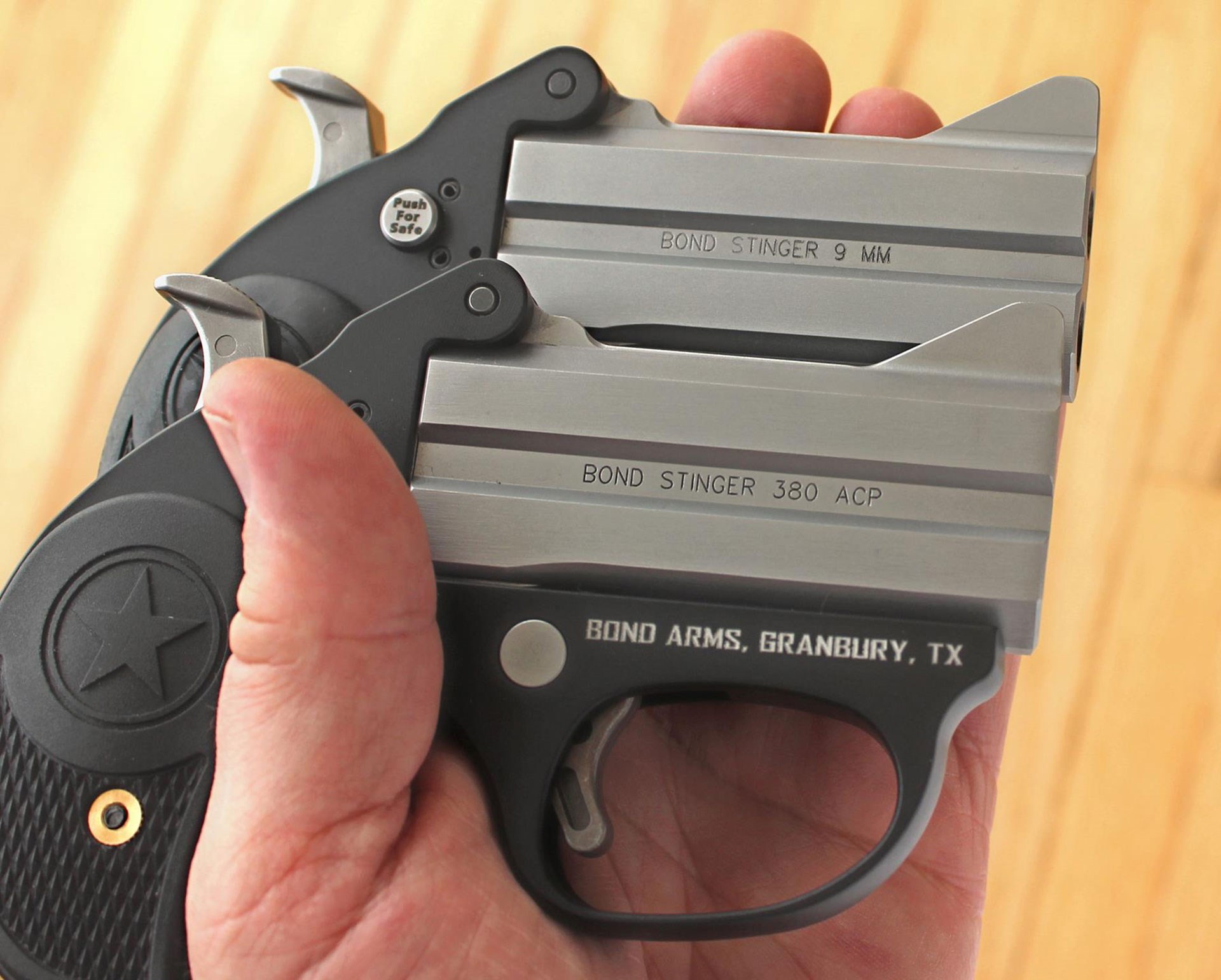
Specifications:
Manufacturer: Bond Arms
Model: Stinger
Action: Single-Action Double Barrel
Caliber: 9 mm or .380 ACP
Barrel: Tip-Up Stainless Steel, Matte Finish
Frame: 7075 Aluminum, Milled Billet
Frame Finish: Matte Black Hard Coat Anodized
Trigger Guard: Integral
Controls: Stainless Steel
Grips: Textured Black Rubber and Slim Textured Polymer Included
Front Sight: Fixed Blade
Rear Sight: Notch
Safeties: Push-Button Cross Bolt, Release Lever Lock, Rebounding Hammer
Trigger Pull: 5-lbs. 10-oz. to 6-lbs. 1-oz.
Barrel Length: 3”
Overall Length: 5”
Height: 3.80”
Width: 0.7" Barrel & Frame
Grip Width: 0.90" Polymer Grips, 1.15" Rubber Grips
Weight: 11.5-oz. Unloaded with Polymer Grips
Capacity: 2-Rounds
Twist: 1:12” RH
Rifle Grooves: 6
Accessories: Rubber Grips, Polymer Grips, Owner's Manual
Suggested Retail Price: $379












